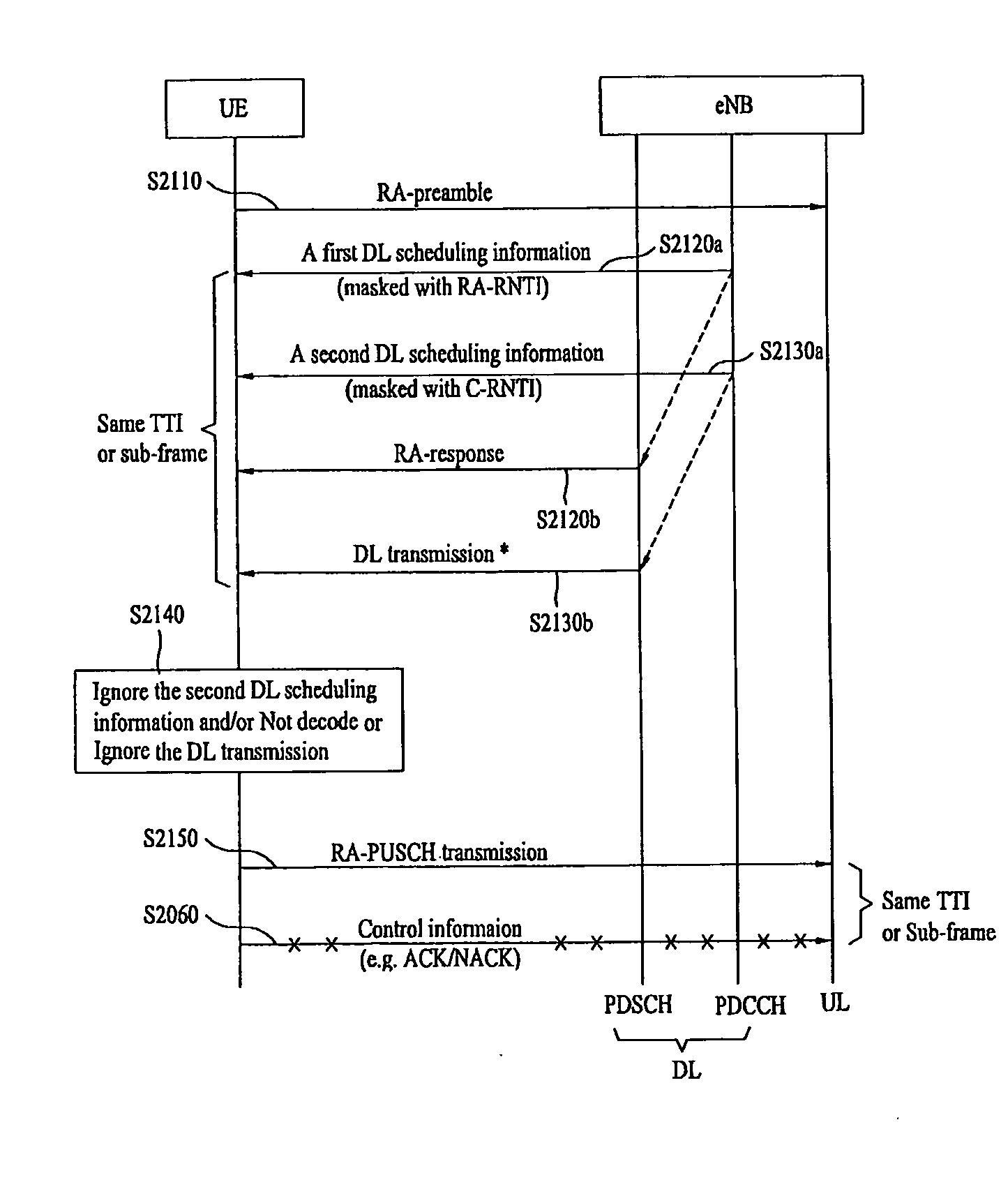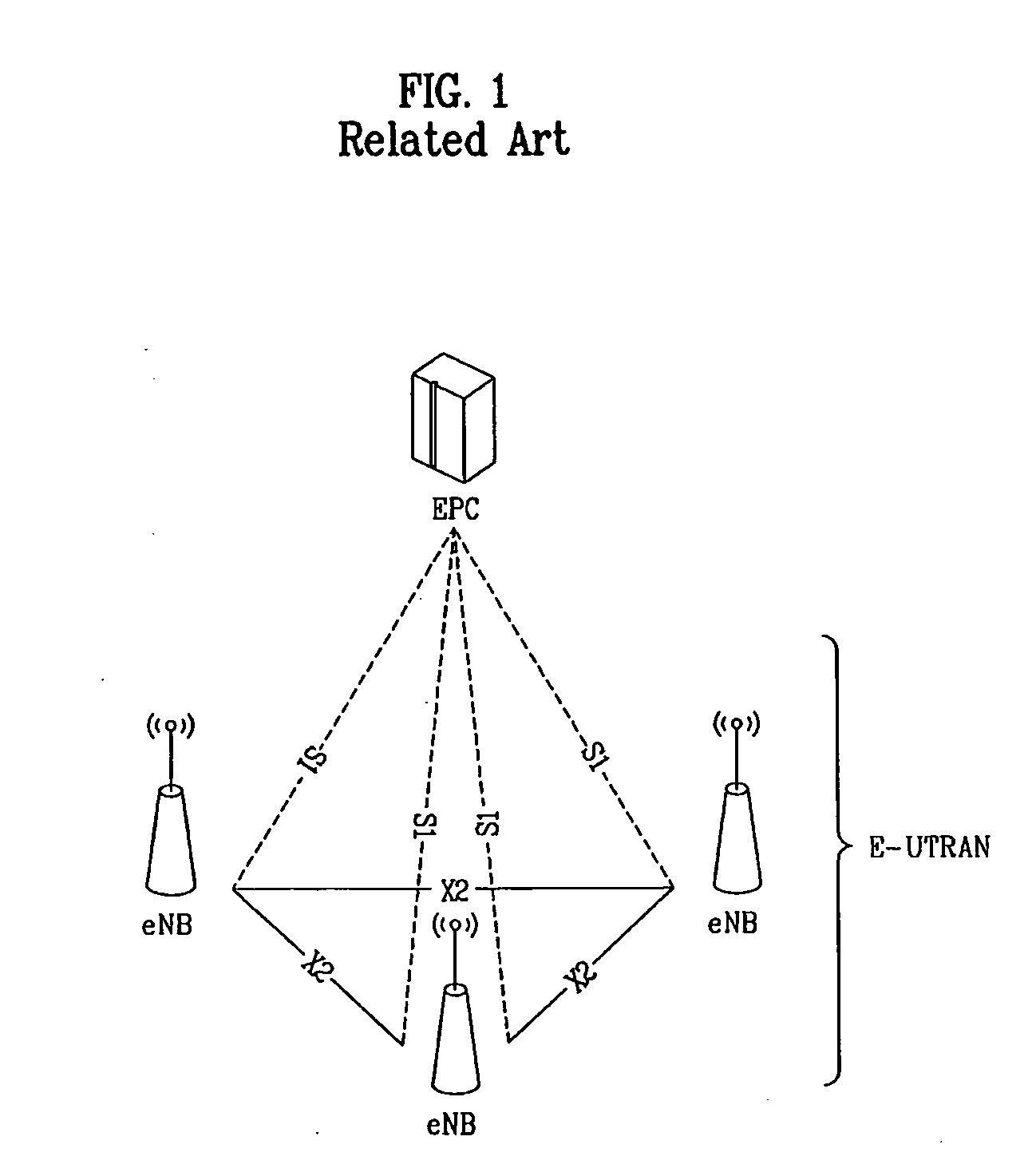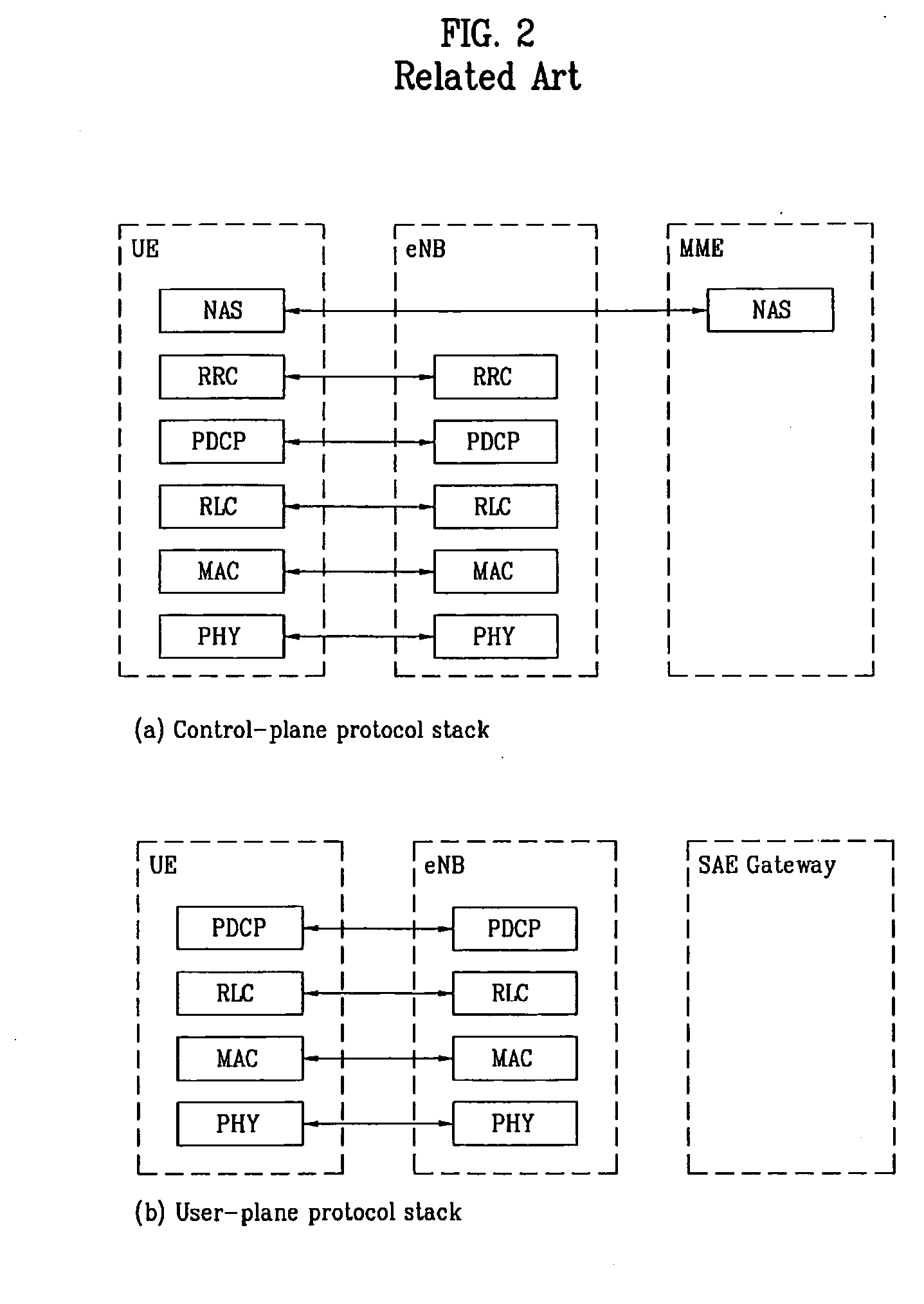Method for resolving collision of uplink signals
a wireless communication system and uplink technology, applied in the field of wireless communication systems, can solve the problems of non-guaranteed delivery of user planes by x2-u interfaces, and achieve the effects of efficiently performing data transmission, and efficiently performing data transmission
- Summary
- Abstract
- Description
- Claims
- Application Information
AI Technical Summary
Benefits of technology
Problems solved by technology
Method used
Image
Examples
embodiment 1
Discard RA-PUSCH when PUSCH and RA-PUSCH Collide
[0074]When a UE has received both a general PUSCH transmission command and an RA-PUSCH transmission command and radio resources indicated by the received general PUSCH transmission command and RA-PUSCH transmission command collide, the UE may ignore the RA-PUSCH transmission command and transmit a general PUSCH according to the general PUSCH transmission command. Preferably, when a UE has received both a general PUSCH transmission command and an RA-PUSCH transmission command for the same time, the UE may ignore the RA-PUSCH transmission command and transmit a general PUSCH according to the general PUSCH transmission command. By ignoring the RA-PUSCH transmission command, the UE can transmit only one PUSCH in the SC-FDMA system, thereby maintaining single-carrier characteristics.
[0075]The main reason why the RA-PUSCH is discarded is that the RA-PUSCH may collide with an RA-PUSCH transmitted by another UE that has transmitted the same RA...
embodiment 2
Ignore PUSCH Transmission Command During Random Access Procedure
[0077]The UE may not decode or may ignore a general PUSCH uplink scheduling command during all or part of the period until the UE receives an RA-response and transmits an RA-PUSCH after starting RA-preamble transmission. The UE can also ignore a general PUSCH uplink scheduling command during all or part of the period until the UE terminates the random access attempt after starting RA-preamble transmission. This method eliminates the need for the UE, which attempts random access, to simultaneously transmit the RA-PUSCH and the PUSCH. This method also eliminates the burden of the UE, which attempts random access, having to decode both the general PUSCH uplink scheduling signal and the RA-response. Details of this method are illustrated in FIGS. 10-13.
[0078]As shown in FIG. 10, a UE transmits an RA-preamble to an eNB (S1010). In the case where the eNB has successfully received the RA-preamble, the eNB transmits an RA-respo...
embodiment 3
Ignore Downlink Transmission Other than RA-Response During Random Access Procedure
[0085]The UE may not decode or may ignore a downlink transmission (i.e., information transmitted in downlink) other than an RA-response in order to further reduce decoding load of the UE during a random access procedure. Further, the UE may not decode or may ignore downlink packet scheduling information associated with a downlink transmission other than the RA-response. However, the UE may decode downlink packets that do not require uplink transmission. For example, the UE may decode downlink scheduling information of downlink packets (for example, broadcast or multicast packets) which do not require ACK / NACK transmission and packets corresponding to the downlink scheduling information. Details of this method are illustrated in FIGS. 14-16.
[0086]As shown in FIG. 14, a UE transmits an RA-preamble to an eNB (S1410). In the case where the eNB has successfully received the RA-preamble, the eNB transmits an...
PUM
 Login to View More
Login to View More Abstract
Description
Claims
Application Information
 Login to View More
Login to View More - R&D
- Intellectual Property
- Life Sciences
- Materials
- Tech Scout
- Unparalleled Data Quality
- Higher Quality Content
- 60% Fewer Hallucinations
Browse by: Latest US Patents, China's latest patents, Technical Efficacy Thesaurus, Application Domain, Technology Topic, Popular Technical Reports.
© 2025 PatSnap. All rights reserved.Legal|Privacy policy|Modern Slavery Act Transparency Statement|Sitemap|About US| Contact US: help@patsnap.com



